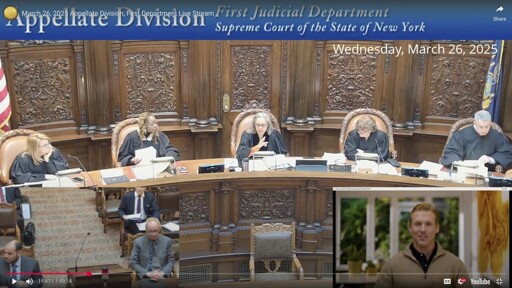- cross-posted to:
- [email protected]
- cross-posted to:
- [email protected]
The latest bizarre chapter in the awkward arrival of artificial intelligence in the legal world unfolded March 26 under the stained-glass dome of New York State Supreme Court Appellate Division’s First Judicial Department, where a panel of judges was set to hear from Jerome Dewald, a plaintiff in an employment dispute.
On the video screen appeared a smiling, youthful-looking man with a sculpted hairdo, button-down shirt and sweater.
“May it please the court,” the man began. “I come here today a humble pro se before a panel of five distinguished justices.”
“Ok, hold on,” Manzanet-Daniels said. “Is that counsel for the case?”
“I generated that. That’s not a real person,” Dewald answered.
It was, in fact, an avatar generated by artificial intelligence. The judge was not pleased.



My initial thought about this is that it’ll probably be interpreted as a person arguing on one’s own behalf rather than having representation from counsel or an attorney (“pro se legal representation”) while using a computer, since one party wasn’t represented by an attorney. The fact that the computer can generate a video or text probably isn’t very relevant, although that probably wasn’t happening in the past.